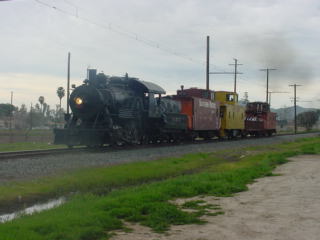
I was picked up by Larry Boerio and Chris Parker and we drove out to Riverside and visited both stations.
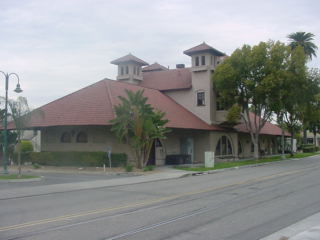
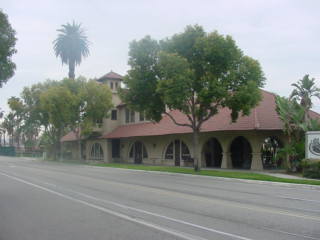
The former Union Pacific Riverside station built in 1904 by the San Pedro, Los Angeles and Salt Lake Railroad along their route to Los Angeles. Union Pacific Railroad acquired the line on Vine Street along with the station in 1921. Local Pacific Electric streetcars served the station via a terminal at 7th and Vine until 1924 and Union Pacific's City of Los Angeles served the station until 1971 when Amtrak took over intercity passenger service. The final trips of were on April 30 eastbound and May 2 westbound. The depot was listed on the National Register of Historic Places on April 18, 1977. It currently houses the Coffee Depot.
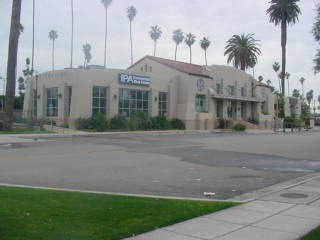

The former Santa Fe station in Riverside, built in 1927 and served the Grand Canyon trains. It closed on May 15, 1968, when the Grand Canyon was re-routed via Pasadena to replace the discontinued Chief. It is currently home to two businesses.
We drove to a 7-11 for snacks before I showed Chris and Larry where the Union Pacific tracks used to go through town. From there we drove to Hunter Park, home of the Riverside Live Steamers, which operate two miles of tracks and only steam engines are allowed to run here.
Back in the 1950's, Joe Hunter, a well-known Riverside industrialist, realized that steam locomotives were disappearing from the railroads that passed through Riverside. Knowing that future generations would not know the excitement of seeing, smelling and hearing the sounds of steam locomotives, he had a vision. Why not duplicate a steam train in miniature?
Setting aside 40 acres that surrounded his industrial complex, Mr. Hunter had a 4,300 foot railroad built at the corner of Iowa and Columbia avenues. While the railroad was being constructed, a locomotive and three cars were built. Steam up facilities were installed at the rear of the metal building now occupied by Familian Pipe & Supply. Trains were operated on a sporadic basis with no set schedule. Ultimately, the property was donated to the City of Riverside, and was named Hunter Park. When Mr. Hunter died, the city had an unusual problem. They had a park because of the railroad, but no one to maintain or operate the train.
A group of interested railroad enthusiasts in Riverside led by Dr. John Creighton undertook negotiations with the city to assure that the 7.5 inch gauge railroad would not be neglected. In 1965, the City Council officially turned over to the fledgling Riverside Live Steamers, the responsibility for maintaining and operating the train. In 1966, RLS was incorporated under the laws of the State of California. During the past fifty-seven years, RLS has greatly expanded the original railroad to more than 10,000 feet of track, built three buildings and the station. With the cooperation of the city, six additional cars were built in 1972.
Approximately 18,000-20,000 passengers ride the trains each year. The city owned equipment is greatly supplemented by privately owned locomotives and cars. Many times, three to four trains will be in operation. With the exception of major items, like a new boiler, all of the equipment and trackage is maintained at minimal expense to the city. All of this requires thousands of volunteer man hours, but our members have stepped forward for fifty-seven years to keep the facility in top shape.
RLS is pleased to offer thousands of people an opportunity to see, hear, and smell what steam locomotion is all about. We like to think Mr. Hunter would be very proud of our accomplishments during the past forty-six years.

The entrance to the shop area as we parked with Southern Pacific caboose 899 built by the railroad, year unknown.
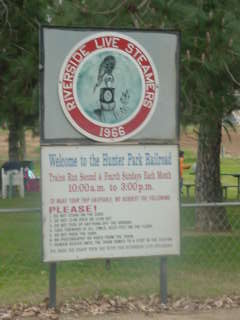
I managed to get on the first train of the day. There is no photography allowed from the train so I enjoyed my first run over their tracks. After a nice ride throughout the park, we returned to the station where I detrained and Larry climbed aboard. Now for some pictures.

The locomotive which took me on my journey around the site.

There is a wig-wag signal that protects a crossing.
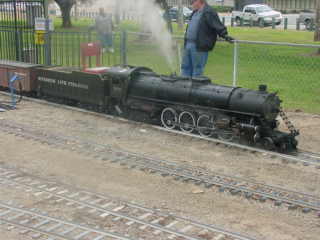
Another view of the steam engine.

The pop-off valve went off just before the next train's departure.
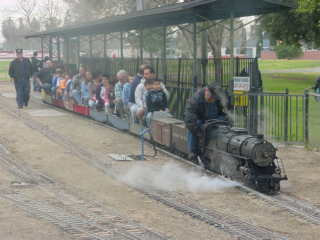
The next run departs the station.

Here comes the train.
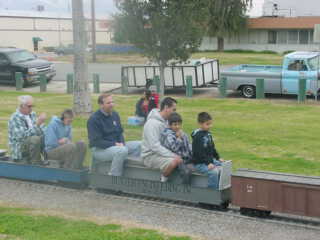
Larry enjoying his ride.
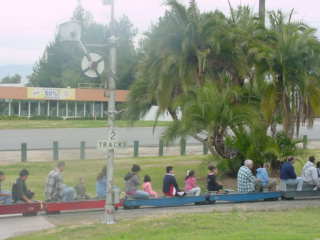
Passing the wig-wag.


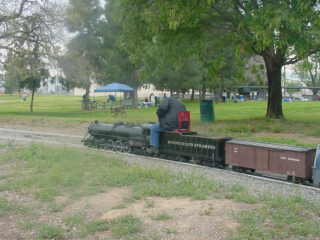

A few minutes later the train came by me as I had relocated.
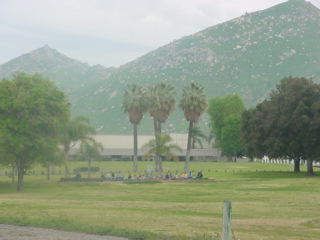
It circled the soccer field and was on its way to my next photo location.

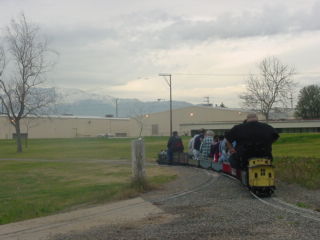


The train passed me again.


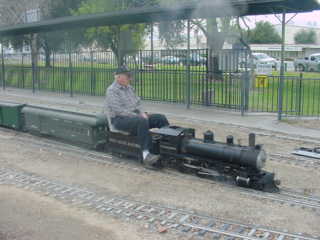
Two more engines came out to run on this rail line.

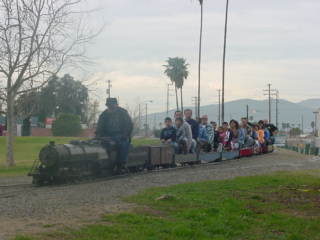
Another live steam photo runby. Chris, Larry and I went to board the next train but it was full, then another train arrived and we asked the owner if we could ride his train, to which he responded "Yes". This engine ran fast and sounded the most real of any of them I had seen here today. We caught up to the train in front and had to stop to let him get in front and have some distance between us. At the yard, there were some cars for a birthday train which he would pull next.
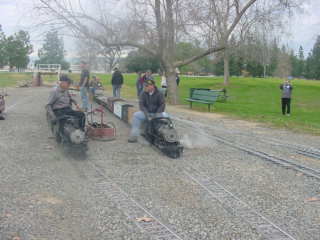
Trains in the yard.

Back at the station, a double-headed train was set up to run next, after which the three of us visited the shop area.

The storage area for the cars and engines.
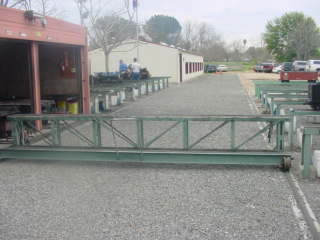
A transfer table to move their equipment around.
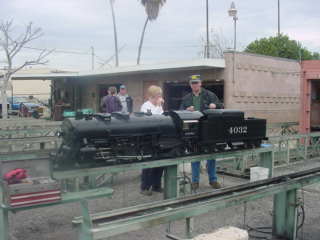
A Santa Fe engine was being worked on.
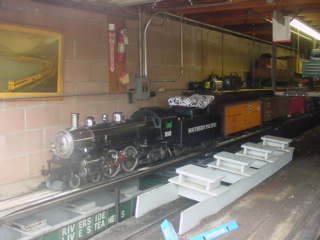

More equipment stored indoors.
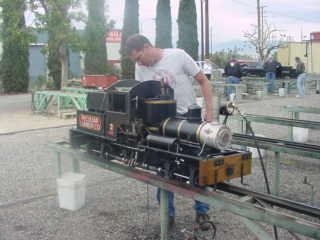
A Shay engine was being worked on.

Another engine being worked on.
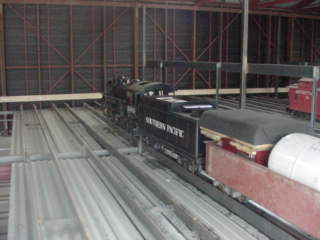
A Northern Pacific locomotive not in use today.
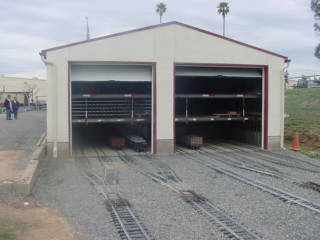
This is the new storage building.
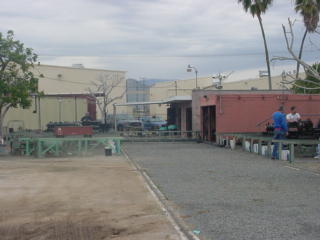
Looking down the transfer table.

The members confer on an engine.
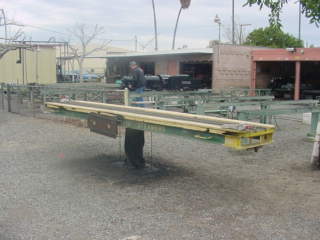
The table used to unload the engines from the trucks onto the table tracks.
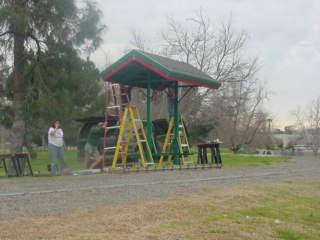
This new station shelter was an Eagle Scout project.

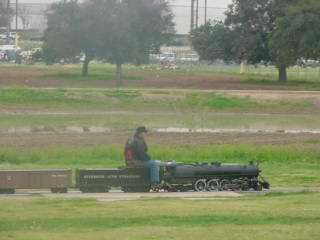
Two more views of trains before we departed the Riverside Live Steamers and drove to the Orange Empire Railway Museum in Perris.